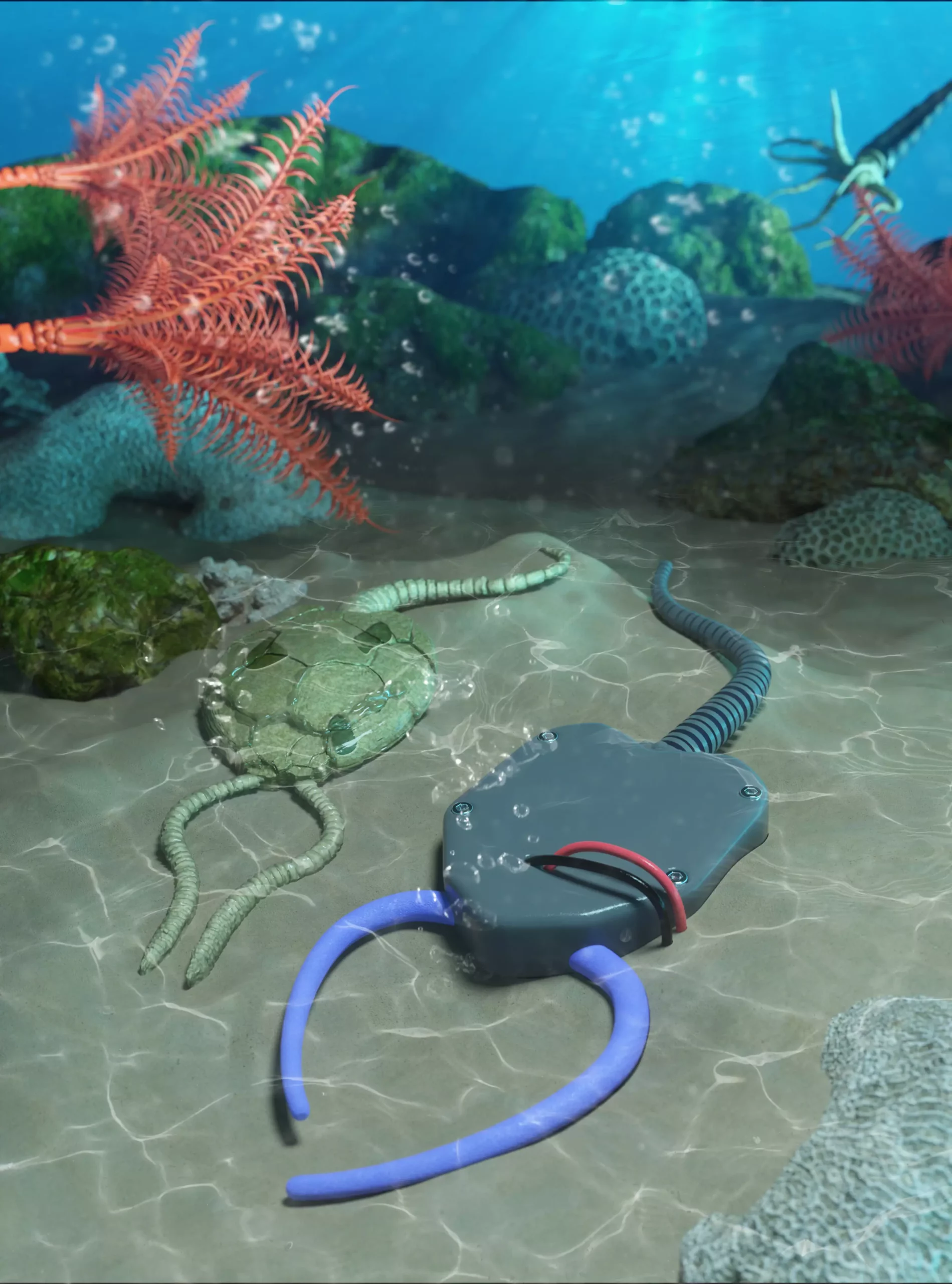Soft robotics, the field of creating robots from flexible and safe materials, has shown great promise in various applications such as medical devices and improving efficiency in tasks. Researchers are now turning to ancient creatures for inspiration in developing new robotic movements and designs. Richard Desatnik, working with Philip LeDuc, Carmel Majidi, and paleontologists from Europe at Carnegie Mellon University, has been studying the locomotion of sea creatures that lived millions of years ago. By building soft robots based on the movement of these ancient animals, they aim to broaden our understanding of robotics and uncover insights from the other 99% of creatures that once roamed the Earth.
Desatnik and his colleagues focused on pleurocystitids, a type of sea creature that lived around 500 million years ago. Similar to present-day sea stars and sea urchins, pleurocystitids had a muscular stem that allowed them to move. By using CT scans, the researchers obtained a better understanding of the 3D shape of pleurocystitids and used computer simulations to hypothesize how these creatures propelled themselves through the water.
Drawing from their insights and data gathered from the fossils, the researchers constructed a soft robot that mimicked the movements of pleurocystitids. The robot replicated the sweeping motion of the stem, which enabled the ancient creatures to glide along the ocean floor. Through their work, the team discovered that longer stems, which pleurocystitids likely developed over generations, could potentially increase their speed without requiring additional energy.
The development of underwater soft robots inspired by ancient creatures like pleurocystitids opens up new possibilities for various industries. Desatnik highlights the potential applications of these robots in areas such as geologic surveying and repairing underwater machinery. These soft robots could revolutionize tasks that require human intervention in challenging environments, where their flexibility and safety in interaction would be invaluable.
The Field of Paleobionics
Desatnik and his team coined the term “paleobionics” to describe their approach of using extinct animals to inform soft robotic design. This innovative method not only advances the field of soft robotics but also offers insights into evolution, biomechanics, and the movements of soft robots. By studying the movement strategies of ancient creatures, researchers can gain a deeper understanding of the factors that contribute to robust and successful locomotion.
Exploring soft robotics through the lens of ancient creatures provides a fresh perspective on developing robots with enhanced movement capabilities. Richard Desatnik’s work on building soft robots inspired by pleurocystitids demonstrates the potential for leveraging the knowledge from extinct animals to inform modern robotics. With continued research and development in paleobionics, we can expect further advancements in soft robot design, leading to safer and more efficient robots for various applications in medicine, exploration, and industry.


Leave a Reply